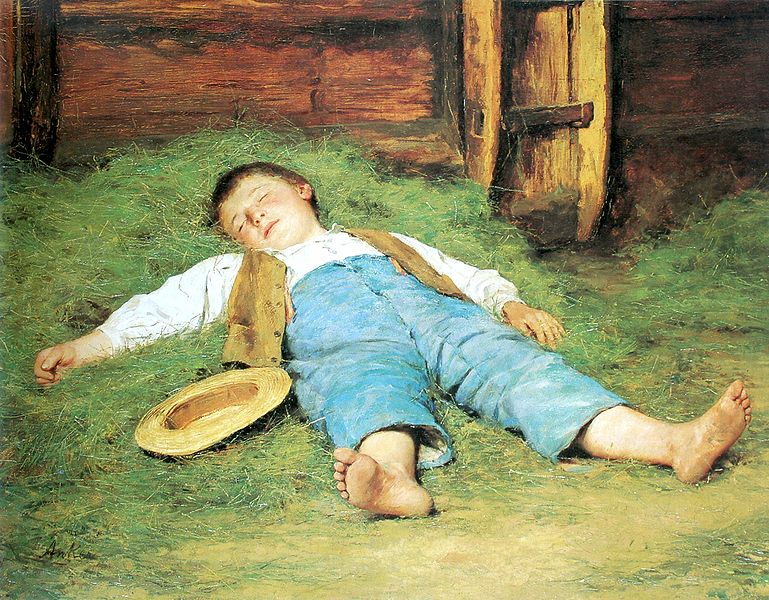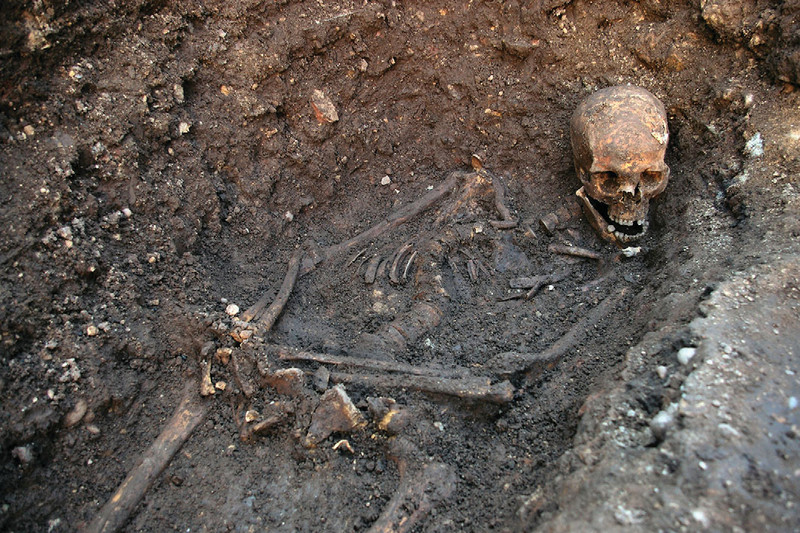From Eubulides:
Electra doesn’t know that the man approaching is her brother, Orestes.
Electra knows her brother.
Does Electra know the man who is approaching?
From Eubulides:
Electra doesn’t know that the man approaching is her brother, Orestes.
Electra knows her brother.
Does Electra know the man who is approaching?
In the early days of Dada I received for review a book which contained the following ‘poem’:
'A B C D E F G H I J K L M N O P Q R S T U V W X Y Z.'On which I commented:
'1 2 3 4 5 6 7 8 9 10.'I still think that was the most snappy review I ever wrote; but unfortunately The Times refused to print it.
— Richard Aldington, Life for Life’s Sake, 1941

Obscure but entertaining: In 1123 David I of Scotland established that the Saint Andrews Links was common land that belonged to the townspeople of St Andrews.
David was the grandson of Duncan I, who’d been murdered by Macbeth — the man who was determined to “fight the course.”
See Out, Out!

“A sleeping child gives me the impression of a traveller in a very far country.” — Emerson
A curious observation by a British ornithologist during World War I:
The Zeppelin raids … were nearly always heralded in this country by the crowing of pheasants, and the sensitiveness of this species to distant sounds was frequently a subject of comment. There seems no reason to suppose that pheasants have keener powers of hearing than men; it appears more probable that these birds are alarmed by the sudden quivering of the trees, on which they happen to be perched, at the time of an explosion … During the first Zeppelin raid in January 1915, pheasants … thirty-five to forty miles from the area over which the Zeppelins flew, shrieked themselves hoarse. In one of the early battles in the North Sea … Gamekeepers on the east coast used to say that they always knew when enemy raids had commenced, ‘for the pheasants call us day and night’.
On the Western Front, a starling learned to imitate the whistle that warned of enemy aeroplanes. One artillery officer wrote, “It was great fun to see everyone diving for cover, and I was nearly deceived myself one day.” A gun commander wrote of an owl, “The beastly bird learnt to imitate the alarm whistle to a nicety; on several occasions he turned me out in pyjamas and, when the crew had manned the gun, gave vent to a decided chuckle.” See Onlookers.
(Joy Damousi, Deborah Tout-Smith, and Bart Ziino, eds., Museums, History and the Intimate Experience of the Great War, 2020.)

The remains of Richard III were discovered under a Leicester car park in 2012. In the city center searchers located the site of the demolished Greyfriars Church where Richard’s body had been buried hastily in 1485, and the skeleton of an adult male human was found beneath the church’s choir. It exhibited severe scoliosis of the spine and 10 injuries to the head, rib, and pelvis, including “a mortal battlefield wound in the back of the skull” apparently inflicted by a halberd. The king’s identity was confirmed by a mitochondrial DNA sample provided by his modern descendants.
He was reburied in Leicester Cathedral in 2015.
04/13/2024 UPDATE: He was identified through descendants of his elder sister, Anne of York — he had no direct living descendants. My mistake. (Thanks, Steve.)

Send a postcard to the “missing post office” on Awashima Island, Japan, and it will be held there to be read by anyone. Messages can be sent for any reason — the office has received cards addressed to deceased relatives, early loves, unborn children, even to a traffic light. Samples:
‘Mother, When you died last summer I didn’t cry. When you were alive it was like we only said horrible and spiteful things to each other … If we met now I think we still would … But a year has passed and I have only loving memories from childhood left. I have when we made pudding together. I have when we read books. I have when you bought me my piano. That was the happiest.’
‘To my future grandchild, When will you arrive? The sooner the better, come on and be born! I can’t wait to finally do for you everything I couldn’t do for my own kids.’
‘Actually, I was hoping to do the folk dance at school with you. My heart was pounding with excitement as our turn together was coming around soon but … just before it happened, the song cut off. Since then several autumns have gone by. What might have happened to you by now?’
The project was launched in 2013 by artist Saya Kubota and has been maintained due to its popularity. Anyone can participate — send a postcard to this address, omitting the name of the recipient and your own name and address:
Missing Post Office (Hyoryu Yubinkyoku) 769-1108 Hyoryu Yubinkyoku Dome Awashima 1317-2, Takuma Town, Miyoto City, Kagawa Prefecture, Japan
A visitor who feels a message is meant for them will be allowed to keep it.
Related: The Bridegroom’s Oak.
We seem to think naturally of musical pitches as bearing spatial relations to each other, and of music reflecting movement within that space — we speak of notes neighboring one another, of being higher or lower than one another, of scales ascending or descending, and so on. Why is this? It’s true that “high” notes reflect higher frequencies, but people who don’t know this still tend to use these terms. Why don’t we call “high” notes “hot” or “deep”?
In summarizing several cross-cultural studies, Stephen Davis concluded that music’s being “heard in spatial terms would appear to be more or less universal.” The notes that Westerners call “high” some other cultures call small, weak, sharp, or white, while “low” notes are big, strong, flat, heavy, or black. But Davies finds these are all terms for spatial concepts and found no reversals of these “synaesthetic equations” (no cultures in which “high” notes are low, big, or heavy, for example).
Trinity University philosopher Andrew Kania writes, “[F]undamental though the phenomenon seems to be to our experience of music, it can be quite baffling to consider what we could be hearing moving in the music, and what space such movement could be located in.”
(Andrew Kania, Philosophy of Western Music: A Contemporary Introduction, 2020.)
In a friendly competition with linguist Richard Lederer in 1990, Bruce Monrad, a student at St. Paul’s School in Concord, N.H., produced an 11-word “supersentence” — “a single sentence that includes one example of each of the four phrases and three subordinate clauses that are identified in English grammar. These are: prepositional phrase, participial phrase, gerund phrase, infinitive phrase, adverb clause, adjective clause, and noun clause”:
Whoever rebels, daring oppose by fighting when oppressed, which overcomes, conquers.
Dave Morice labels the parts here. Lederer notes that the adjective clause, “which overcomes,” is a dangling modifier. “Still, I have never been able to improve on Bruce’s effort.”
(Richard Lederer, “The Glamour of Grammar,” Verbatim 16:4 [Spring 1990], 5-6.)
A puzzle by Soviet science writer Yakov Perelman: A bottle full of gasoline has a mass of 1,000 grams. The same bottle filled with acid has a mass of 1,600 grams. The acid is twice as dense as the gasoline. What’s the mass of the bottle?